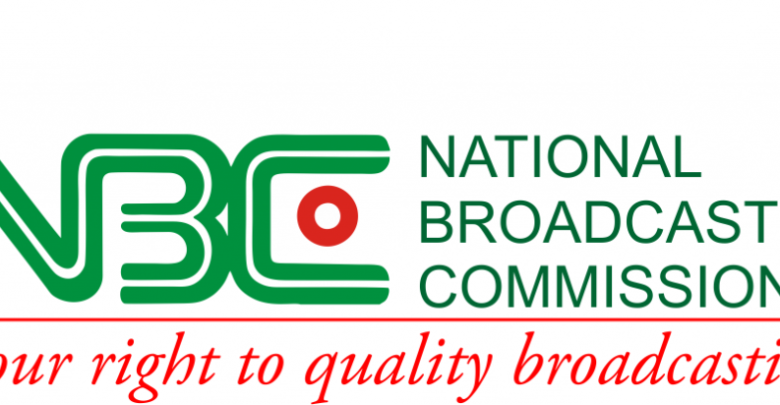Pay Television: Time for Pay-per-View

OBASOLAPE TYCHUS
Just before the House of Representatives went on the break enforced by the fury of the novel Corona Virus Disease AKA COVID-19, I was looking in the direction of the National Assembly’s lower chamber to see what it would make of its desire to get pay television operators in the country to adopt a pay-as-you-go (PAYG) billing system. I bet there were thousands of Nigerians waiting-expecting, actually-to see the House compel the abolition of the monthly contract billing model for the a la carte-like PAYSG. Following the adoption of a motion by Hon. Unyime Idem from Akwa Ibom State, the House resolved to interface with MultiChoice, the biggest of the pay television service operators, and its competitors to bring about the envisaged PAYG model, a subscriber’s wet dream for as long as I can remember.
Tuesday provided Idem, Deputy Chairman, House Committee of Communication, the opportunity to reboot his pet project. The occasion was the inauguration of the House ad-hoc committee on non-Implementation of PAYG, which he unsurprisingly chairs. Speaking with journalists after the inauguration and gushing with no little self-importance, Idem said: “As chairman of this ad- hoc committee, I want to assure Nigerians that their interest will be protected. When I moved the motion on the floor of the House, I stated that in a business of this nature, the customers should be given the right to choose what they want. We have interacted with Nigerians and what they want is pay-as-you-go, so that when they are out in their respective locations, their subscriptions can be there and they will make use of it when they return.”
Idem added that his committee is ready to step on toes because its members were elected by constituents “based on courage and boldness”.
While moving his motion in March, Idem noted that National Broadcasting Commission (NBC) Act empowers the commission to regulate the ownership, activities or operations of radio and television stations as well as direct broadcast satellite service providers. He claimed that there are over 10 pay television service providers in the country, with all of them refusing to abolish the monthly billing system. But most of the lawmaker’s barbs were directed at MultiChoice, which he said charges Nigerians subscribers monthly unlike what is obtainable in other countries where it operates.
“Nigeria constitutes 40 per cent of DStv’s global market share, yet over 40 per cent of the citizens do not use a greater part of their paid monthly tariff due to engagements that take them from one location to the other on a daily basis, hence they cannot access the services upon expiration, whether or not they used their previous subscriptions until they renew it for another month.
“The continuous exploitation by MultiChoice, owners of DStv, constitutes economic sabotage against Nigerians as most of them pay for services they do not consume while the company, judging from their average monthly tariff of eight thousand naira, if multiplied by 11.9 million subscribers, makes about N100 billion monthly at the expense of its subscribers,” Idem said in the manner of a demagogue.
I do not know where Idem got the numbers he was playing with, but there is no way in the world they could be correct. As at November 2019 when MultiChoice Africa presented its maiden financial results after listing on the Johannesburg Stock Exchange, the total number of subscribers across Africa was 15.1million. South Africa accounted for 7.4million, while the rest of Africa weighed in 7.7million, according to fin24.com. The website also reported that it was the first time the subscriber count from across Africa was exceeding the South African count.
Idem would follow this lie with another: That pay-as-you-watch is in operation in other MultiChoice markets. As with the first lie, the second was avoidable. A simple Google search would have shown that MultiChoice operates the monthly billing system everywhere it is present. I know because I checked and I also saw, on the Internet, country-by-country price comparisons. Idem should hire a bright chap to conduct basic research for him. The fact is no pay TV provider in the world operates a PAYG model, which means none in Nigeria does. Curiously, other service providers are never part of the PAYG conversation. I am also aware that DStv subscribers, who travel out of their locations are allowed, to suspend their subscription three times in a year for a period between seven and 14 days.
To be fair, Idem did not invent those lies, which actually germinated in some brains on the street, with the second a product of the legless assumption that the telecoms sector, where pay-as-you-go is the staple, and the pay television sector are the same. But they have been given some sort of official endorsement by relevance-seeking politicians, sadly with little or no knowledge of what they are talking about.
Six years ago, a House member, Mrs. Aisha Dahiru Modibbo, raised similar issues on the floor of the House, where she railed against “rigid” subscription policy under which subscribers are billed “whether they are at home viewing programmes or not”.
Tychus, an economist, writes from Jalingo
Contributing to the debate, Leo Ogor, the then House Deputy Leader, wondered why Nigeria, a country in which DStv has a huge subscriber base, does not get “subscriber-friendly offers” given to citizens of other African countries. The oxygen the lies get from political quarters make them flicker and sometimes burn brightly until they peter out like they did a few years ago when something akin to a rogue operator launched with the promise to make premium content available at bargain basement prices as well as allow pay-as-you-go. For a few weeks, PAYG agitators were in seventh heaven. But during the brief spell that the operator, TStv, was alive, it operated a fixed period subscription model.
PAYG, to those who desire it, is the same as Pay-per-View (PPV), which they assume ensures the delivery of pay TV programming a la carte– in the misguided belief that it is cheaper. Well, it is not. It is, in fact, way more expensive and it is not exactly Pay TV.
The PPV model is used in the broadcast special events, usually of the high-ticket variety in sports and entertainment. It is available via cable and satellite television subscription as well as via the Internet.
Last February, the Deontay Wilder/ Tyson Fury heavyweight boxing rematch was sold on PPV at the cost of $79.99 (HD) and $69.99 (SD) to boxing fans in the US. In the UK, it cost £61 (HD) and £53 (SD). It ended in the seventh round. It would have been the same if it ended in the first round, as no refund is made.
Similar marquee match-up, featuring Floyd Mayweather and Connor McGregor in 2017, was sold to viewers in America at $99.99 (HD) and $89.99 (SD). Four years ago, the blockbuster clash between Mayweather and Manny Pacquiao was sold for $99.5. All the three epic contests were watched on DStv’s SuperSport at no additional cost to the subscriber, a clear indication that PPV is not the cheaper alternative it is assumed to be.
The spark for the demand of PAYG is the telecommunications sector, which is assumed to be the same as pay television. Clearly ignored when making comparisons is the fact that television companies, more often than not, buy the content they redistribute. The programmes, on account of the fierce competition among pay TV companies, are bought at near-extortionate sums and contracts for them are renewed at a king’s ransom. Telcos, on the other hand, do a one-off payment for spectrum. Also, on the technological front, both fields are dissimilar. While telecoms is two-way, satellite broadcasting is one-way, leaving broadcasters unable to know if a subscriber is watching or not, as the signal is sent to the decoder, which sends no feedback. Thus, for PAYG to be possible, a complete overhaul of the broadcast architecture and billing model is required. This, if it happens at all, would cost an arm and a few legs, which will certainly make services far more expensive.
Equally ignored in the discussions-and the Internet can always help- is the fact that content redistribution contracts are not signed on a pay-as-you-watch basis.
This means they cannot be sold as such except in Video-on-Demand services, which pay television-strictly speaking-is not. In most parts of the world, the content aggregation/ bundling model remains dominant in the pay television ecosystem because it is the most cost-effective. For example, households with mildly varying TV programming tastes are sure to benefit from having every member on the same bouquet. This way, the content valued by each member of the household is delivered in an economically viable way.





